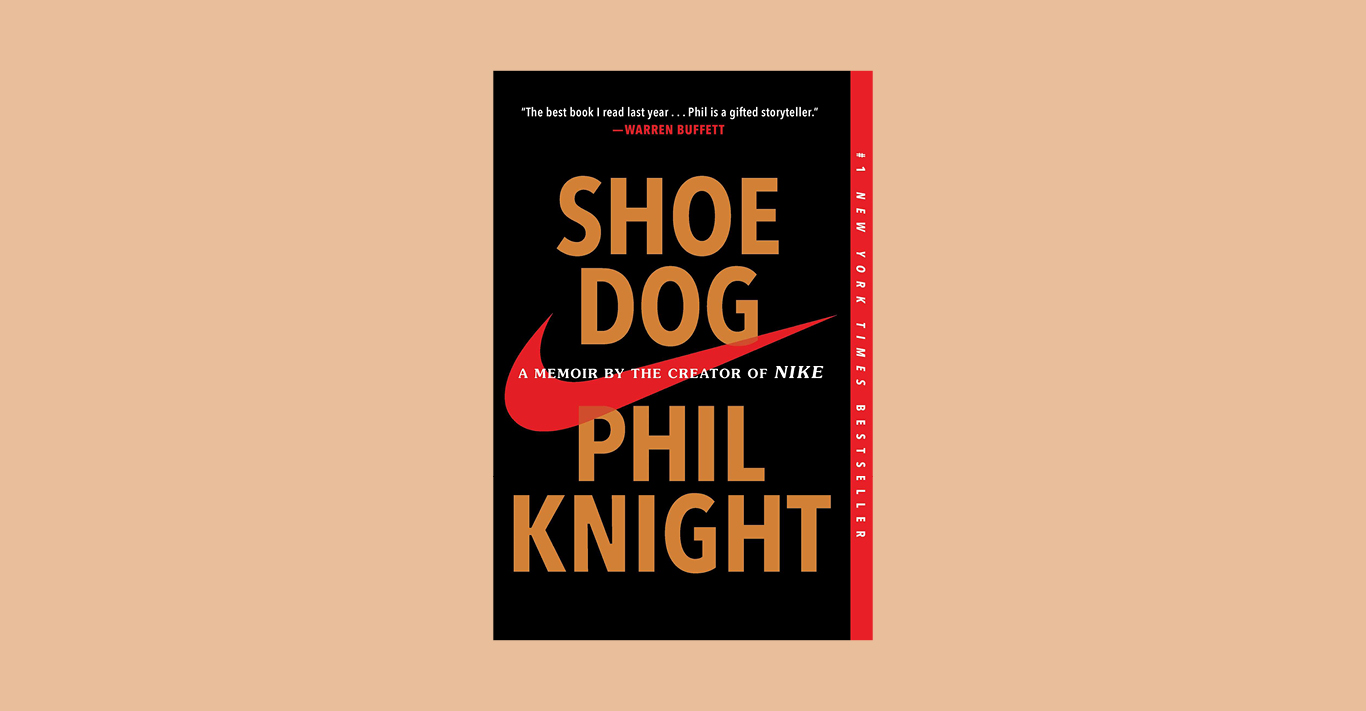WORDS
Nick Atkins
Phil ‘Buck’ Knight grew his company from a small import business to one of the most recognisable brands in the world, but he didn’t do it without learning a thing or two along the way. In his memoir, Shoe Dog, he tracks the growth of the sporting-goods giant, detailing all the pitfalls, blunders and triumphs that are part and parcel of building an empire. Here are the lessons we learnt from the Oregonian multibillionaire.
1. Don’t stop
During high school and university, Knight was a proficient middle-distance track runner, and early on in his book, he shares a piece of advice that applies as much to running as succeeding in business: ‘Keep going, don’t stop. No matter what, just keep going’. In fact he sets such store by this advice, he calls it ‘possibly the only piece of advice you should ever give’. It also surely had a part in inspiring the brand’s famous motto, that would go on to adorn billboards, T-shirts and shoe boxes across the planet: Just Do It.
2. Do your homework
In his first foray into sporting goods, Knight began importing running shoes from the Onitsuka Tiger Company in Japan. This was in 1962, and aside from the existing vast cultural differences between the US and Japan, the war was still a very raw memory. This meant doing business on the far side of the Pacific was a potential minefield. Luckily on his first visit to Japan, Knight was introduced to some former American GIs who had started their own business in Japan. They schooled him on how the Japanese did business, what to expect, and what to avoid, including being a brash, loud and cocky American. This advice would prove to be invaluable in the coming years.
3. Bend the rules (but don’t shout about it)
With his import company Blue Ribbon struggling to stay afloat, and the complications of doing business across an ocean in the 1960s starting to take their toll, Knight resorted to what could fairly be described as some light industrial espionage. He had ‘a man on the inside’ at Onitsuka, who would keep track of things for him from the Japanese end, and warn him of upcoming changes of heart from the unpredictable management. It’s not as unusual as it sounds. Knight describes that using ‘spies’ was fairly commonplace at the time in Japanese business, even insisting that there were ‘spy schools’ where individuals could learn the skills required to fulfil such a role. Where Knight slipped up however, was in sending a company-wide memo proudly detailing his shrewd tactics. The memo contained the fateful words ‘I have hired a spy’ and was one he would live to regret… you’ll have to read the book to find out why.
4. Be loyal (but only up to a point)
After a long and ever more fraught business relationship with Onitsuka, Knight began to move into manufacturing and importing his own shoes in the late 1960s. He describes examining a new contract to import shoes from another company, which did not breach his existing contract with Onitsuka, but certainly ‘violated the spirit of the agreement’. However, Onitsuka had recently threatened to switch its distributor in the United States if Knight refused to sell it a controlling stake in his company (otherwise known as a hostile takeover). So all bets were off and, as Knight puts it, he ‘signed the heck’ out of the new contract with the new company.
5. Innovate and sacrifice
A key figure in the story of Nike and Knight’s life as a whole, is his former track coach and 49% partner in the company, Bill Bowerman. An inspirational figure and mentor to many top runners, Bowerman’s devotion to running, and particularly running shoes, was unsurpassed. During the early development stages of Nike’s training shoes, Bowerman experimented with different combinations of rubbers and plastics to make a better sole, creating them himself in a cement mixer, inhaling noxious fumes and permanently damaging his health in the process. He would go on to develop the company’s groundbreaking grip by pouring liquid rubber into his long-suffering wife’s waffle iron.
6. Listen to your team
Under pressure to come up with a brand name for his burgeoning shoe company, Knight asked his 50-strong team to come up with the best names they could think of. Knight himself came up with the brand name Dimension Six, which everyone in the company, without fail, informed him was completely awful. His stubbornness almost meant that he settled for this peculiar moniker despite their protestations, but with the deadline looming, Jeff Johnson – one of the company’s earliest employees – had the name ‘Nike’ come to him in a dream. Nike: the goddess of victory and a short, memorable brand name that alongside the “swoosh” would change the face of sports branding forever.
7. Stand out
When establishing the Nike brand, Knight knew it was essential for his shoes to stand out from the crowd – specifically the brand’s long-established rival Adidas. In those days, training-shoe boxes only came in white or blue, so Knight chose a colour as far away from that as possible: neon orange. The rest, as they say, is shoe history.
Shoe Dog by Phil Knight (£9.99, Simon & Schuster Ltd), out now





